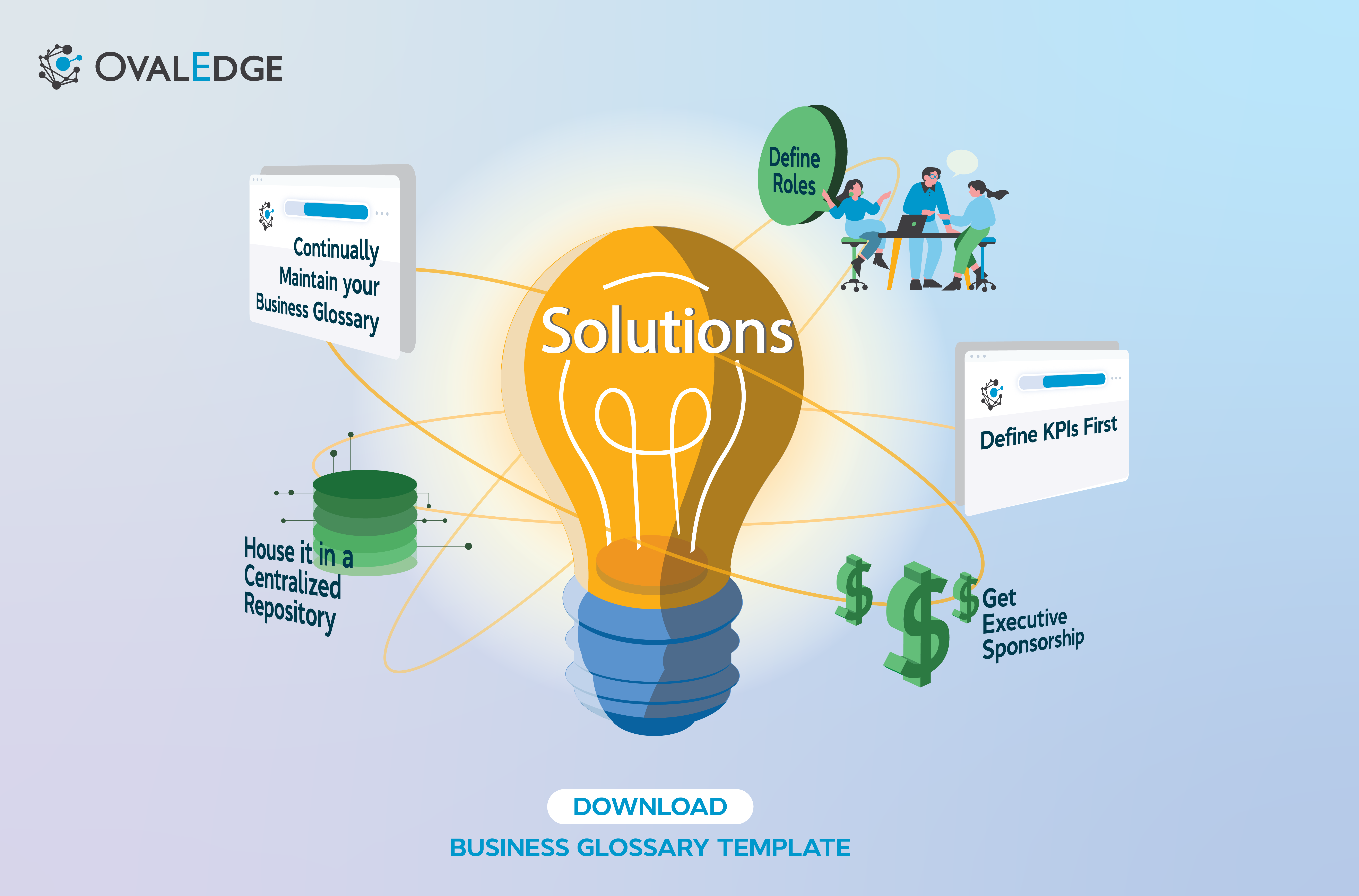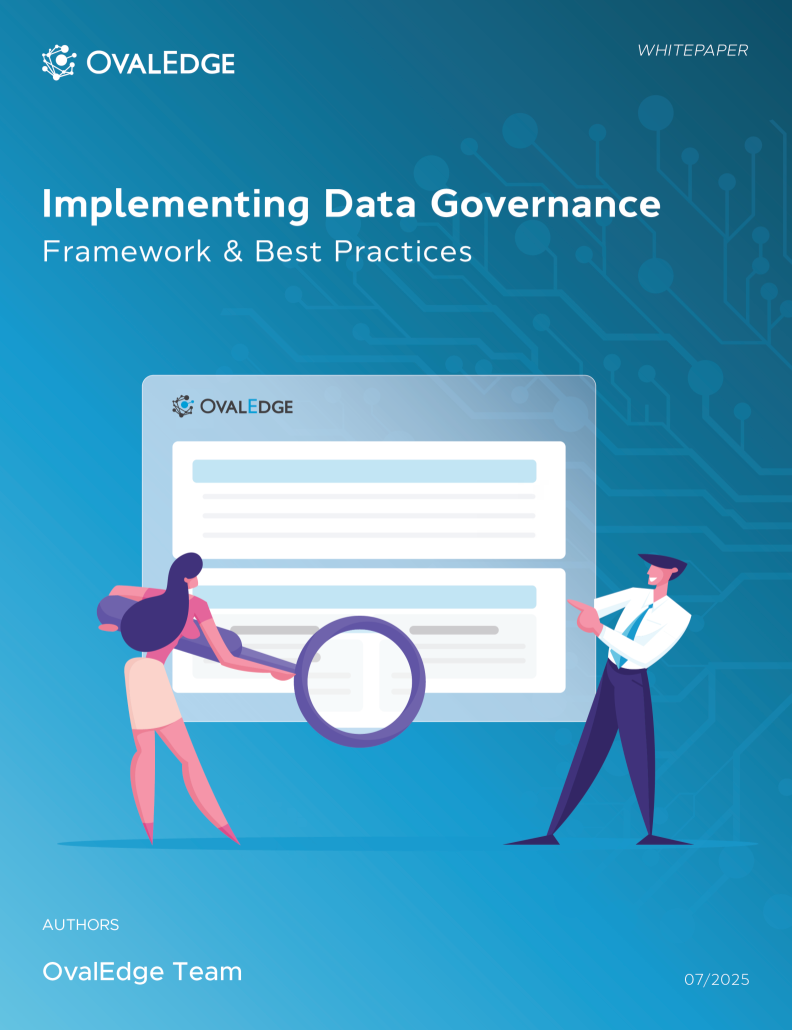Table of Contents
Business Glossary | Challenges and Solutions
Many data teams may believe the hard work is over once they have collected and curated the terms required to create a business glossary. Unfortunately, that isn't the case.
While developing a business glossary does require a great deal of effort and a clear strategy, once live, you need to maintain this resource to ensure it continues to inform your users accurately. A business glossary is a dynamic resource, and maintaining one comes with challenges that, while often relevant to those you may have encountered in the development process, are unique to business glossary governance.
In this blog, I'll explain what these challenges are and, crucially, how to overcome them. By the end, you'll breathe a sigh of relief, knowing that the robustness of your business glossary will stand the test of time and that your efforts to establish a standardized repository of terms and definitions to support data-driven innovation in your company won't fall by the wayside.
Core Benefits of a Business Glossary
Before diving into the challenges associated with business glossary maintenance, let's have a quick refresher on why this resource is so vital. In our last blog on the topic, we covered the benefits of building a business glossary in-depth.
Here are the core takeaways:
- Standardized business terms facilitate communication and collaboration.
- Simplified analytics and trustworthy data drive data literacy and innovation.
- Gain greater control over high-risk business processes.
- With direct access to a trusted source, users can search for business terms independently, alleviating the workload on data teams.
- Establish ownership of data assets.
Ultimately, a business glossary is critical to your data governance toolkit. However, this element requires maintenance. Otherwise, you'll soon fail to see the benefits listed above. Let's run through the challenges most organizations face when maintaining a business glossary before providing the solutions.
Common Challenges and Solutions
The following challenges are common in organizations that have developed and launched a business glossary.
Understanding data ownership
Challenge: While you have undoubtedly run through the painstaking process of determining data ownership while curating your business glossary, this task is ongoing. As new data is introduced into your organization, you must establish ownership. This can be complex as various departments and individual users use the data.
Solution: The only way to combat this challenge is to ensure well-defined roles and responsibilities determine the policies required to assign data ownership. That way, the pre-defined process will ensure that determining ownership is streamlined whenever new data is added.
Related Shorts Video: Meet 'The Data Owner'
Creating robust definitions
Challenge: Even after you establish the definitions required to populate the first incarnation of your business glossary, you need to continue monitoring them for integrity. Issues arise when definitions are derived from something other than the business processes that contribute to the data.
Solution: Ultimately, you should focus on the ongoing process of defining terms strategically. This must start at the data demand level, where you monitor how terms are used, how frequently, and by whom. Policies must define this dynamic process.
Inconsistent participation
Challenge: Many organizations find that even though a business glossary is in place, many users fail to reference it or update the directory with new information surrounding terms. This can be particularly disruptive as other users will follow the guidelines set out by the glossary.
Solution: The most critical solution to this problem is executive sponsorship. When the executives in your company begin to use a business glossary and socialize these actions regularly, it encourages other employees in your organization to do the same.
Related Post: Data Literacy: What it is and How it Benefits Your Business
Navigating the cloud
Challenge: With more businesses migrating critical services to the cloud, the complexity of data management is growing. While the cloud has many benefits, users' frequency of adding and subtracting information from different sources is growing exponentially. When this information changes the definition of a term and isn't updated, issues can arise.
Solution: As with every solution I mention in this blog, the remedy is data governance. When your data is correctly governed through robust policies via a centralized repository, changes made to data should be automatically logged, and, as a result, data owners should be flagged and encouraged to make the necessary updates to business glossary terms and definitions.
While a business glossary is a core component of data governance, further governance is required to maintain one and ensure every user in your organization can benefit from analysis using the correct data.
Top Tips for Maintaining a Business Glossary
While we've covered the core challenges organizations face when maintaining a business glossary and provided solutions to these challenges, there are specific tips you can follow to avoid other potential obstacles.
1. Never consider your business glossary a finished product
Your business glossary constantly evolves as new data enters and leaves your ecosystem. Ensure that everyone in your organization is prepared for updates and that data owners are ready to make them.
2. Don't silo the curation process.
There is a reason you appoint a data governance committee. It should, if developed correctly, represent the full scope of your organization. Leave it to your committee to oversee that the business glossary is maintained, and don't be tempted to hold an independent departmental meeting on the topic.
3. Create airtight definitions in context.
Even when you have a term in place and have followed the correct procedures to define it, confusion can still arise if you haven't communicated the definition correctly. Over time, the term may be used to describe the wrong thing in the wrong place. For example, if you run an international company with global divisions, the term "Gas" might mean petrol or diesel to users in the U.S. but butane or propane to users
4. Don't underestimate the power of data governance.
As you've probably realized from reading this blog, comprehensive data governance is the root of maintaining a business glossary. This governance defines how and when a term needs updating or adding and who is responsible for ensuring it happens. It's about visibility and process.
Related Post: Top 5 Data Governance Use Cases
Wrap up
The power of a business glossary can’t be underestimated. It transforms how users in your organization understand and ultimately utilize data for innovation. And all in a way that ensures the data accessed is correct and high-quality.
However, like all things data, a business glossary is fluid. Follow the steps we’ve laid out in this blog, and you can mitigate the challenges that arise as new data enters your ecosystem and existing data is added to, edited, or removed.
What you should do now
|
OvalEdge recognized as a leader in data governance solutions
.png?width=1081&height=173&name=Forrester%201%20(1).png)
“Reference customers have repeatedly mentioned the great customer service they receive along with the support for their custom requirements, facilitating time to value. OvalEdge fits well with organizations prioritizing business user empowerment within their data governance strategy.”
.png?width=1081&height=241&name=KC%20-%20Logo%201%20(1).png)
“Reference customers have repeatedly mentioned the great customer service they receive along with the support for their custom requirements, facilitating time to value. OvalEdge fits well with organizations prioritizing business user empowerment within their data governance strategy.”
Gartner, Magic Quadrant for Data and Analytics Governance Platforms, January 2025
Gartner does not endorse any vendor, product or service depicted in its research publications, and does not advise technology users to select only those vendors with the highest ratings or other designation. Gartner research publications consist of the opinions of Gartner’s research organization and should not be construed as statements of fact. Gartner disclaims all warranties, expressed or implied, with respect to this research, including any warranties of merchantability or fitness for a particular purpose.
GARTNER and MAGIC QUADRANT are registered trademarks of Gartner, Inc. and/or its affiliates in the U.S. and internationally and are used herein with permission. All rights reserved.



.webp)


